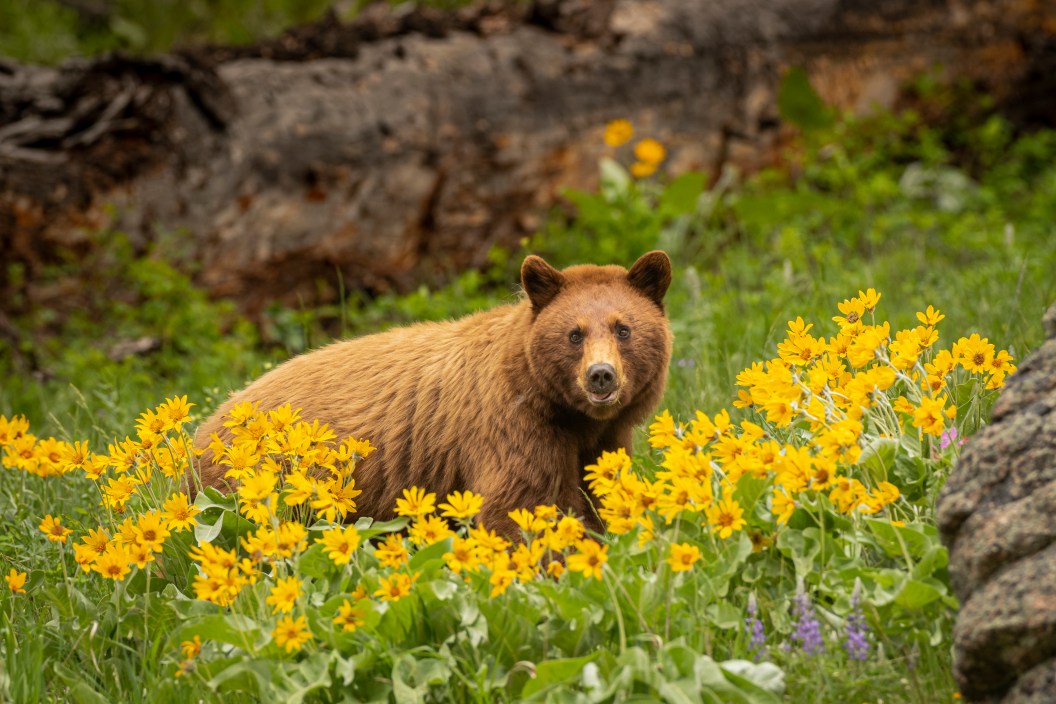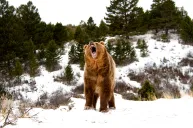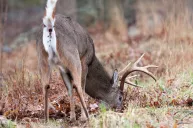Whether you're a hunter, a hiker, or a fisherman, it's wise to know your animal poop, especially bear scat. Having the ability to determine whether or not a bear may be in the area can help you avoid nasty, unwanted encounters with a bear. The quicker you can spot it, the better prepared you will be in the event of a run-in. And, fortunately, it's fairly easy to identify. We'll also help you differentiate black bear and grizzly scat from other common animal poop found in the woods, like mountain lion and coyote scat.
What Does Black Bear Scat Look Like?
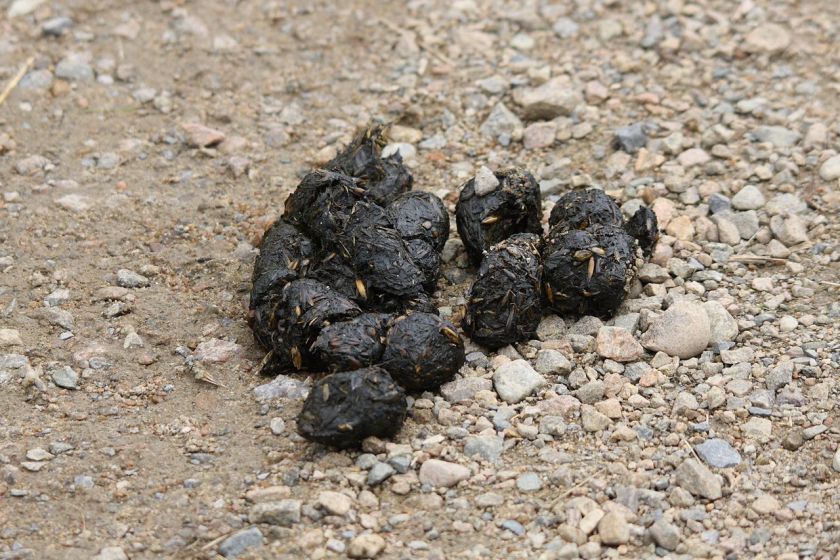
Wikimedia Commons, Cephas
Contrary to the assumptions of many, black bears are actually omnivores with a diet that includes a variety of plants, especially in the spring and early summer seasons. Black bear droppings are usually tubular in shape and can range from 4 to 12 inches in length and usually measure about 1 1/2 inches in diameter.
Unlike other animal scat, the appearance varies quite a bit depending on the animal's most recent food source, but it's almost always black or brown in color.
In the spring when the bears are freshly out of hibernation, they feed extensively on grasses, which results in dark brown or even green scat that's largely uniform in appearance and typically doesn't smell. If you break the droppings apart with a stick, you may find insect parts in there, too, as bruins regularly consume them for a little extra protein.
If a bear feeds on blueberry or other natural wild forage like chokecherry, the berry scat may take on the color of the forage. A bear that has been feeding heavily on berries may also have obvious berry seeds in their poop.
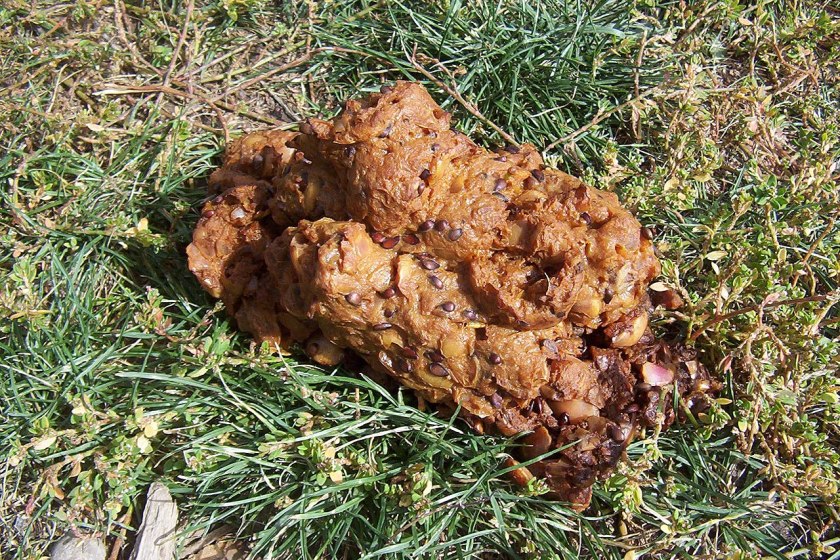
Wikimedia Commons, Fred Bauder
The example photo above shows the scat from a bear that was feeding on apple trees in Colorado. The droppings take on a light brown or reddish-orange appearance, and you can even see the seeds. While most bear scat produced from a green-heavy diet has no smell, this likely produced a slightly sweet or what some describe as a "fermented smell."
Most bear scat only tends to stink once they start eating meat, in which case you'd have no problem spotting bones and hairs that weren't digested in the bear's stomach.
What Does Grizzly Bear Scat Look Like?
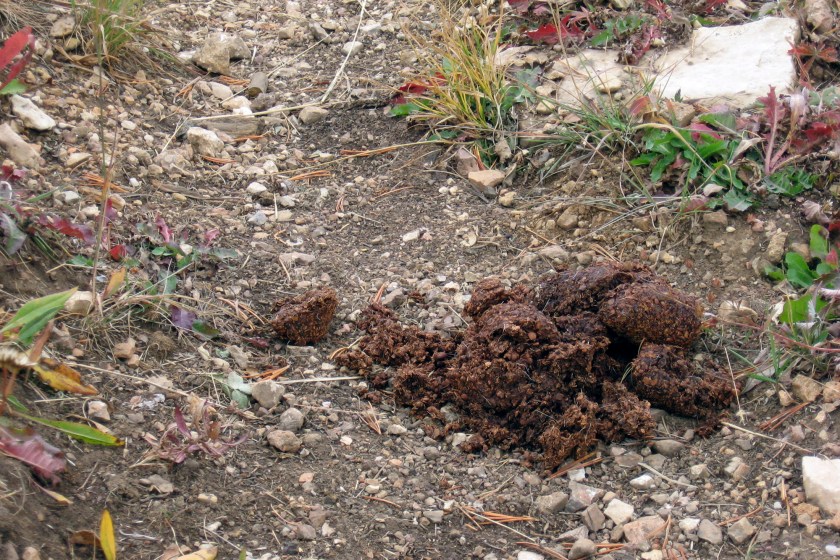
Wikimedia Commons, USDA NRCS
There's an old joke about the difference between black bear and grizzly bear scat that goes, "Grizzly bear scat smells like pepper and has little bells in it," meaning the grizzly ate the hiker who tried to defend themselves with bear spray. In truth, grizzly bear scat is nearly identical to black bear scat because of the similarities between the two digestive systems. The only real difference is in the size. A grizzly's scat may be longer and wider, often between 2 and 2 1/2 inches in diameter.
Again, seasonality plays a big factor in the appearance. In the early spring, you're more likely to see a dark green coloration from consuming grasses, and as the season goes on, you're likely to see more black, brown, or reddish coloration. Color all comes down to the diet.
A bear's diet can also change the consistency of their scat. For instance, a grizzly bear feeding on fish might leave scat that looks watery to the point where it resembles a cow pie. A closer examination should reveal smaller bones, insects, and other tell-tale signs that the animal that left it was not a total vegetarian. In the image above, you can clearly see some hairs from an animal this grizzly ate.
In some places, like Yellowstone National Park, grizzlies have developed unique diets where they feed extensively on moths in the late summer.
How Do You Tell Bear Poop from Other Scat in the Woods?
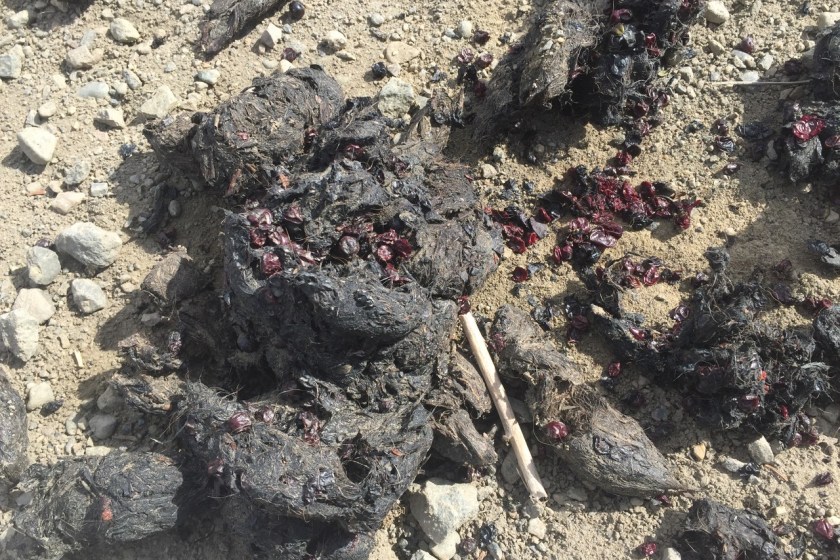
Wikimedia Commons, NPS Photo
Other animals' scat, particularly that of predators, can closely resemble that of a bear. Bobcats and mountain lions are always going to leave scat with hair and bones in it because they're exclusively carnivorous. Look for segmentation, too. If you're looking at something that looks like an oversized version of what your cat leaves in the litter box, odds are it didn't come from a bear. If you break it apart with a stick, it should be obvious whether or not the animal ate anything green (bears do; cats usually do not).
You can think the same way in regards to wolf and coyote droppings. Wolf and coyote poop often looks like the leavings of a domestic dog and produces a similar smell.
Some confusion can arise with raccoon scat, as you'll find seeds and other plants in the droppings, but size and quantity usually serve as easy giveaways. Raccoons use communal sites called latrines to do their business, so if you see a lot of small piles close together, it's probably raccoons. But whatever you do, don't touch it, as raccoon scat carries parasites that can be deadly to humans. That's fortunately not the case with bears.
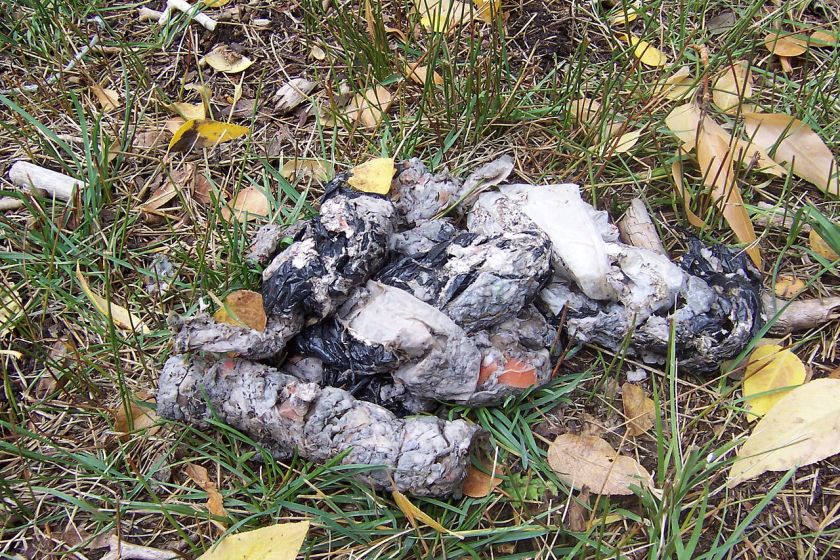
Wikimedia Commons, Fred Bauder
Your Questions, Answered
For bear poop, just remember that it's going to be large in size and diverse in contents. If you're seeing the exoskeletons of insects, grass, seeds and hair, it's very likely you have bears in the area. By learning to recognize bear scat, you can take extra precautions in your outdoor adventures to enjoy an encounter with a bear safely from a distance.
Even though bear scat may not carry parasites like raccoon scat, it's important to never touch animal poop with your bare hands. If you're curious, use a stick to break apart the scat to take a look inside. If it looks fresh, make sure to keep your head on a swivel, too, as it means there could be a bear nearby.
Scat is, basically, piles of organic matter. The appearance varies widely depending on the animal and how old the scat is. Scat can be black to brown to grey and can be in nuggets, pellets, tube-like shapes, or piles. If you're interested in identifying scat, pick up a guidebook or check out your local hunting organizations' resources. Scat identification is really important for successful hunts.
As we noted above, brown bear and black bear scat really only differ in size. Brown bear scat will generally be larger, as the bears themselves are larger. The main difference between bear scat comes from their diet, rather than the subspecies of bear.
READ MORE: Can You ID These Animals by Their Poop?
